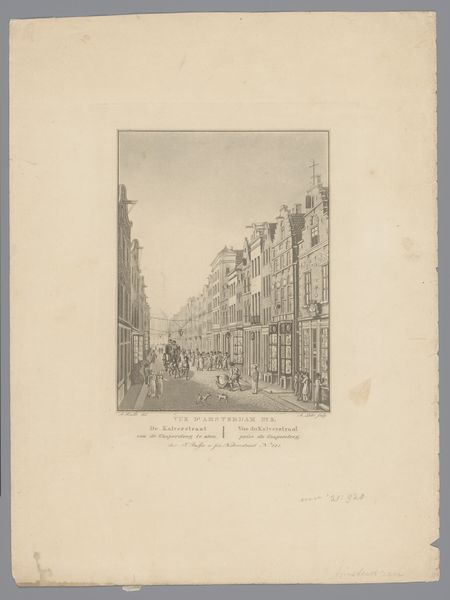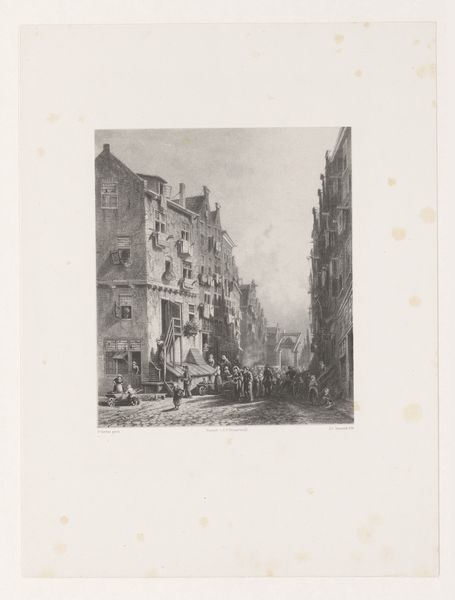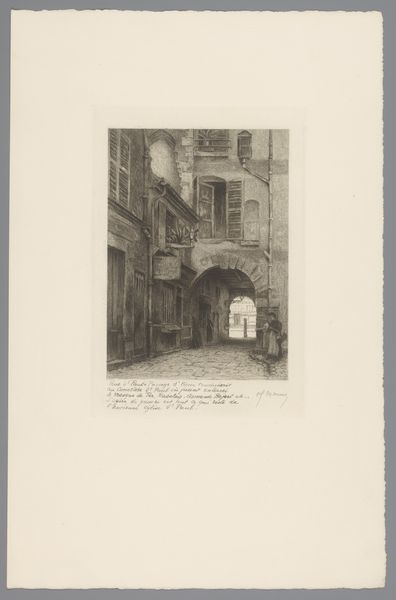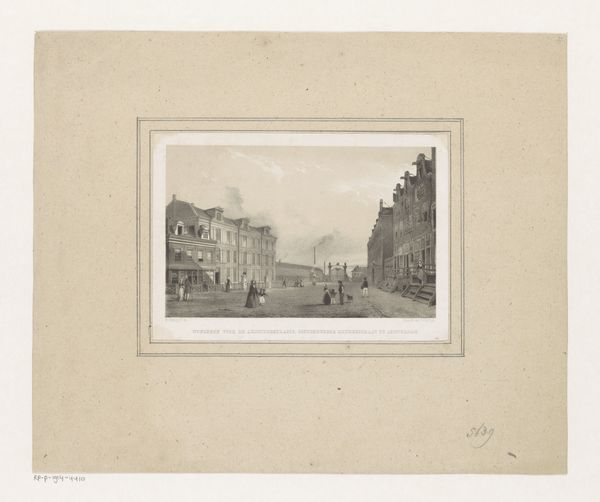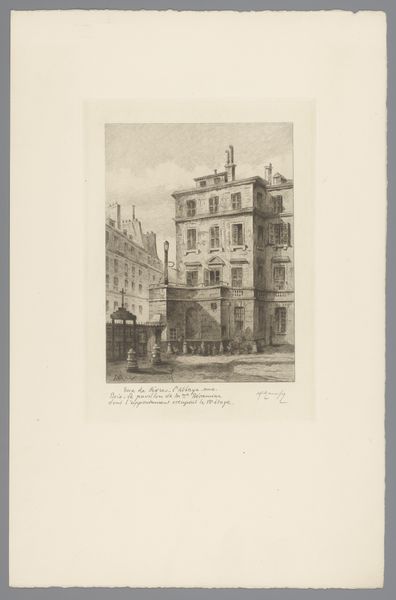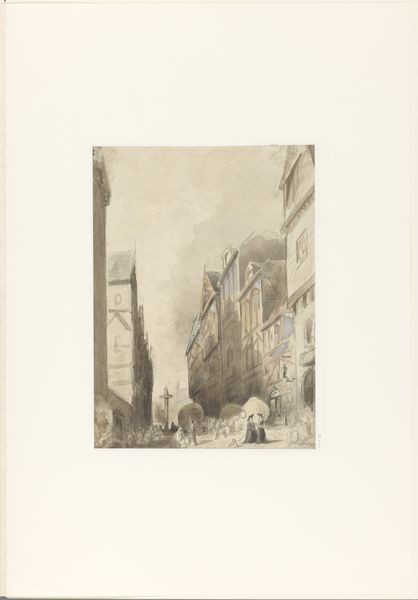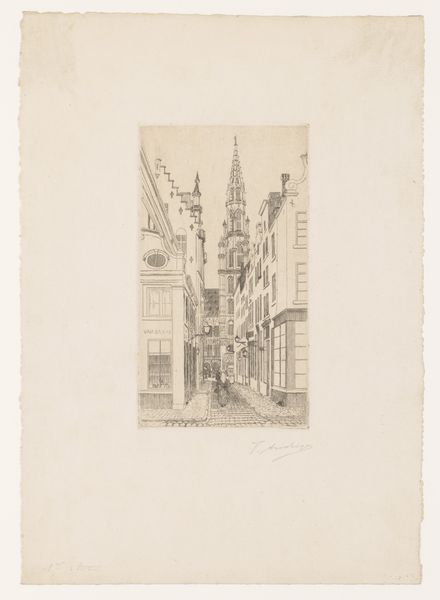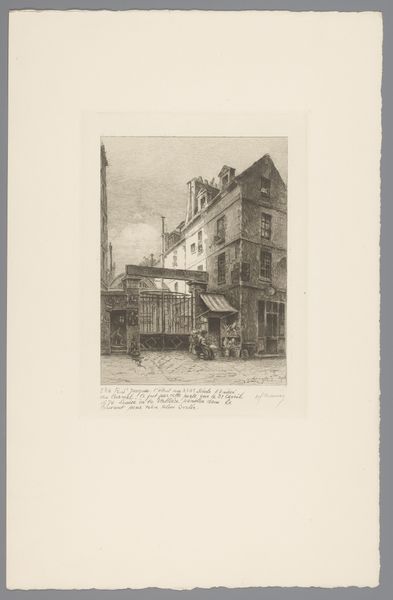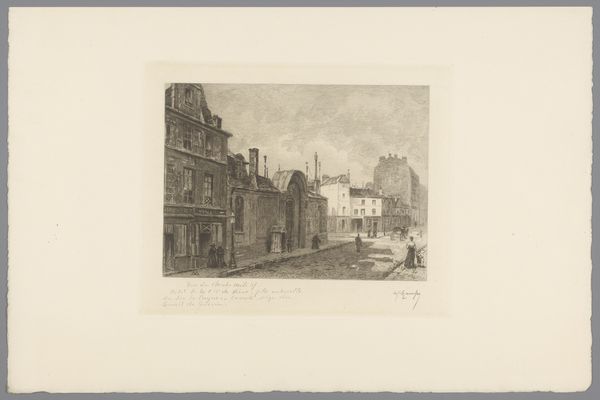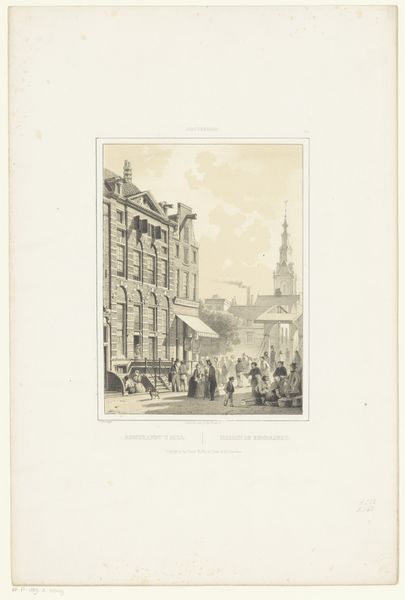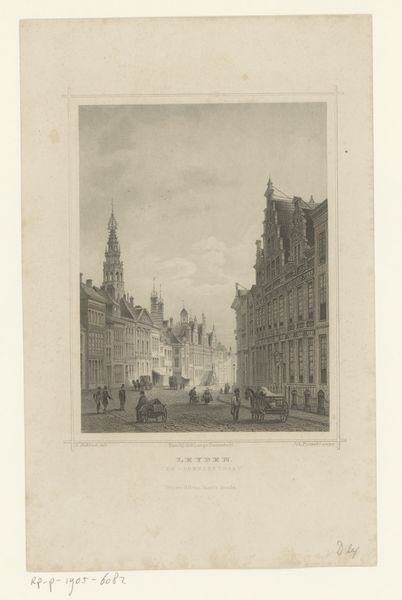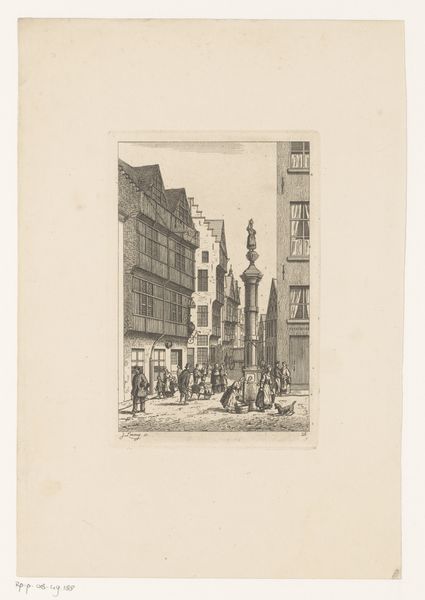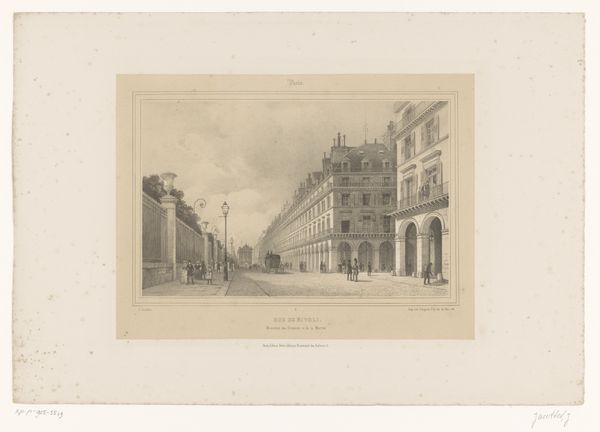
Dimensions: height 284 mm, width 204 mm
Copyright: Rijks Museum: Open Domain
Curator: Here we have Henri Manesse's etching, "Gezicht op de rue de Sèvres in Parijs," dating from somewhere between 1906 and 1911. It's rendered in print on paper, capturing a cityscape bathed in... well, what's your initial take on it? Editor: A certain faded grandeur, I'd say. It's ghostly, almost, like looking at a memory. The street is bustling but somehow silent, wouldn't you agree? A scene witnessed through time's softening filter, so to speak. Curator: Absolutely. Manesse was really interested in portraying the urban landscape. The street seems almost theatrically framed, wouldn't you say? Notice how the buildings loom over the figures, seemingly pressing them together in this liminal area between tradition and modernity. He presents a world undergoing significant transformations through both his composition and rendering. Editor: True, the buildings almost feel like they are witnesses, stoic relics from the past as this "new" world begins to unfurl beneath them. You sense the anxieties inherent to urbanization reflected within the stark contrast between permanence and transience in this space; those high ceilings juxtaposed with cobblestone. How do you imagine this resonated for viewers when he created the work? Curator: The work surely evoked conversations about Haussmannization and urban planning, perhaps critiquing the reshaping of Paris but also inviting reflection on progress and displacement. Manesse likely played with these socio-political questions to tap into viewers' awareness of ongoing cultural shifts, to make them stop and perhaps see their city reflected. What does that tell us about artistic accountability? Editor: Accountability is always relevant. Yet I also imagine he enjoyed losing himself, letting himself get carried away into the maze, almost dizzy. The lines and the buildings give you the impression of chaos but underneath everything exists this solid structure, a backbone almost as strong as its cultural and economic impacts throughout society since this restructuring occurred; as history began morphing itself. It can feel very isolating, though… and liberating, to find those solitary corners. Curator: Precisely. It serves as a perfect artifact reflecting both the personal journey and public experience. It holds a timeless, quiet hum that speaks across eras and contexts; almost echoing against everything else to really stand on its own despite its original influences Editor: It is indeed quite profound in what it tells us—as not merely what has already taken place during those initial moments—but continuing forth indefinitely. Thank you for revealing insights into this work by Manesse.
Comments
No comments
Be the first to comment and join the conversation on the ultimate creative platform.
